Disclosure: This article contains affiliate links. We may earn a commission from purchases at no extra cost to you, which helps our travel content.
Let me shoot straight with you – getting to Pyongyang isn't like rolling into any other capital city. After two decades hauling freight across America and five years exploring Asia's most controlled corners, I can tell you North Korea's capital demands preparation unlike anywhere else. No ride-sharing apps, no rental cars, and definitely no impromptu road trips. But for those willing to navigate the red tape and rigid structure, Pyongyang offers a glimpse into one of the world's most isolated societies – a place where transportation itself tells a profound story about the country.
Getting In: The Limited Pathways to Pyongyang
There are exactly two ways into North Korea: by air or by train, and both come with more paperwork than a cross-country hazmat haul.
The most common route is flying Air Koryo from Beijing to Pyongyang on one of their Russian Tupolev aircraft. It's a bizarre time capsule experience – from the propaganda newspapers they hand out to the mysterious meat sandwich they serve (affectionately dubbed the 'Koryo Burger' by foreigners). Before you ask – no, you can't use your fancy noise-canceling headphones during the flight. Electronics rules are strict.
Your alternative is the train from Beijing through Dandong (China) to Pyongyang. It's a 24-hour journey that I personally prefer – you'll see the dramatic transition at the border, complete with thorough customs inspections where officials will check every digital item you're carrying. Make sure your travel adapters are easily accessible as they'll want to inspect those too.
Both entry methods require booking through authorized tour companies – you cannot just show up at the border. Period.

💡 Pro Tips
- Book your tour at least 3 months in advance to allow time for visa processing
- Bring physical books and magazines for entertainment – your devices may be inspected or temporarily confiscated
- Pack a basic first aid kit including stomach remedies – medical facilities are limited
Mandatory Tour Groups: Your Only Option
Here's the deal – independent travel in North Korea doesn't exist. You must be accompanied by government-approved guides at all times. This isn't a suggestion; it's non-negotiable.
Your transportation will be arranged through your tour company, typically using dedicated tourist buses or vans that follow pre-approved routes. These vehicles are comfortable enough, though nothing fancy. During my three visits, I've found that groups of 15-20 typically get standard buses, while smaller groups might use minivans.
While touring, I recommend keeping a detailed travel journal. My waterproof notepad has been invaluable since electronics use is restricted in many areas. Plus, there's something special about physically writing down observations rather than typing them.
Your guides will be with you constantly – even in the hotel. This isn't because they're suspicious (though there's element of monitoring); it's their job to ensure you follow local customs and regulations. Build a good relationship with them – they control everything from bathroom breaks to photo opportunities.
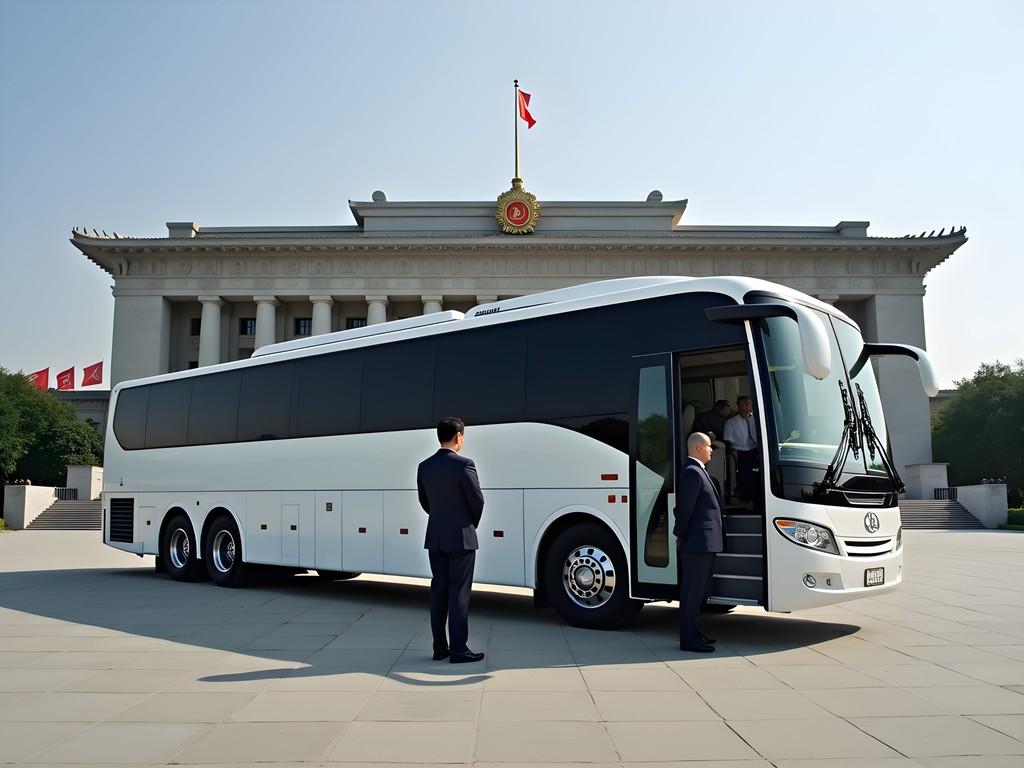
💡 Pro Tips
- Learn basic Korean phrases – your guides will appreciate the effort and it builds goodwill
- Never wander off from your group – even short unauthorized detours can create serious problems
- Bring small gifts for your guides (cigarettes, chocolates, cosmetics) – establishing rapport makes for a better experience
Pyongyang's Metro: The Underground Museum
The Pyongyang Metro is hands-down the most fascinating public transportation system I've ever experienced – and that's saying something from someone who's ridden everything from Bangkok tuk-tuks to Bolivian death roads.
Descending 110 meters underground (one of the world's deepest systems), you're transported into stations that look like ornate palaces, complete with chandeliers, marble columns, and massive socialist murals. For years, tourists were only allowed to visit two showcase stations, but recent tours have expanded access to more of the system.
The trains themselves are vintage German subway cars from the 1970s, reportedly purchased from Berlin. They're maintained impeccably despite their age. During rush hour, the cars fill with locals reading newspapers or books – smartphone zombies don't exist here.
For capturing these incredible underground palaces, I recommend a compact light since flash photography can draw unwanted attention. The lighting is surprisingly good, but having a small boost helps capture the details in those incredible mosaics.
Despite being a showpiece, the metro is genuinely used by locals. Your minders will closely watch your interactions, but respectful nods and smiles are usually reciprocated.
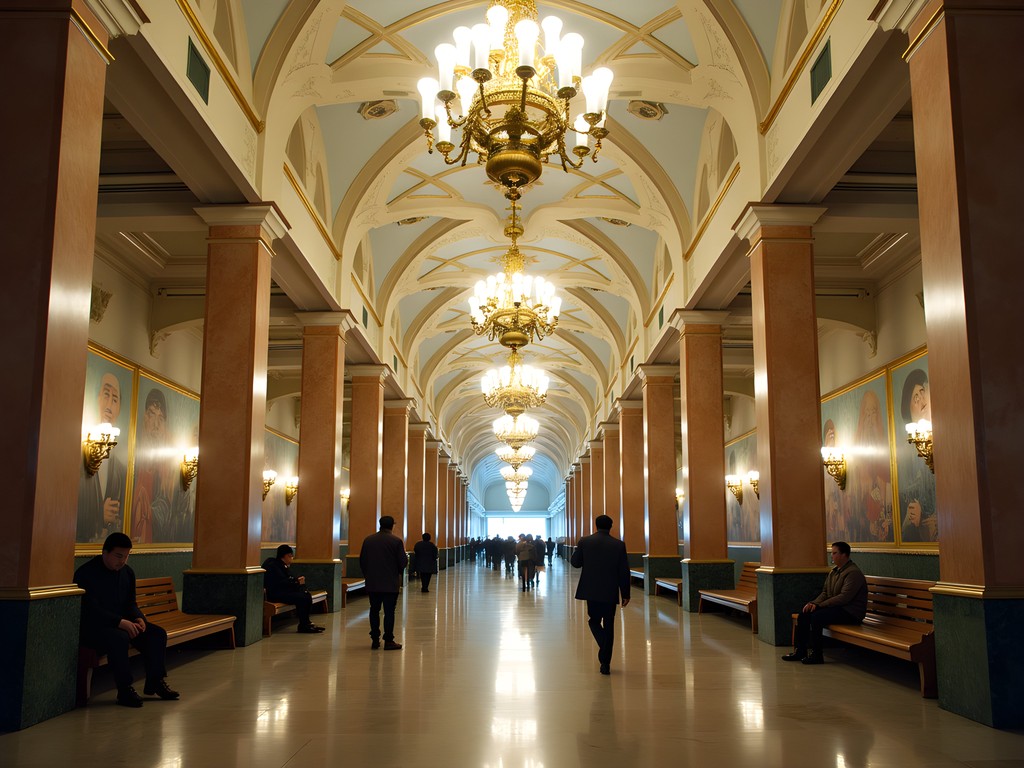
💡 Pro Tips
- Purchase the special metro ticket as a souvenir – they're unique keepsakes
- Have small North Korean won ready for the ticket (guides can help exchange money)
- Stand on the right side of the escalators – these are among the longest escalator rides you'll ever experience
Walking Pyongyang: The Supervised Stroll
Walking around Pyongyang is possible but strictly regulated. Your guides determine where you can walk, when you can walk, and how fast you walk. This isn't a city where you can wander off for solo exploration.
During my visits, I've noticed increasing flexibility for short walks between destinations, especially around Kim Il-sung Square and along the Taedong River. These moments provide rare glimpses into everyday life – children practicing for mass games, elderly folks playing board games in parks, and the occasional local on a bicycle.
Comfortable footwear is absolutely essential. I swear by my walking shoes which have supported me through countless miles of concrete plazas and monument visits. The city is surprisingly hilly in parts, and you'll be doing more standing than you expect while guides explain the significance of various landmarks.
Pyongyang's wide boulevards were designed for military parades, not pedestrians, so crossings can be intimidating. Always follow your guide's lead – traffic rules aren't what you're used to, and the occasional military vehicle expects absolute right-of-way.
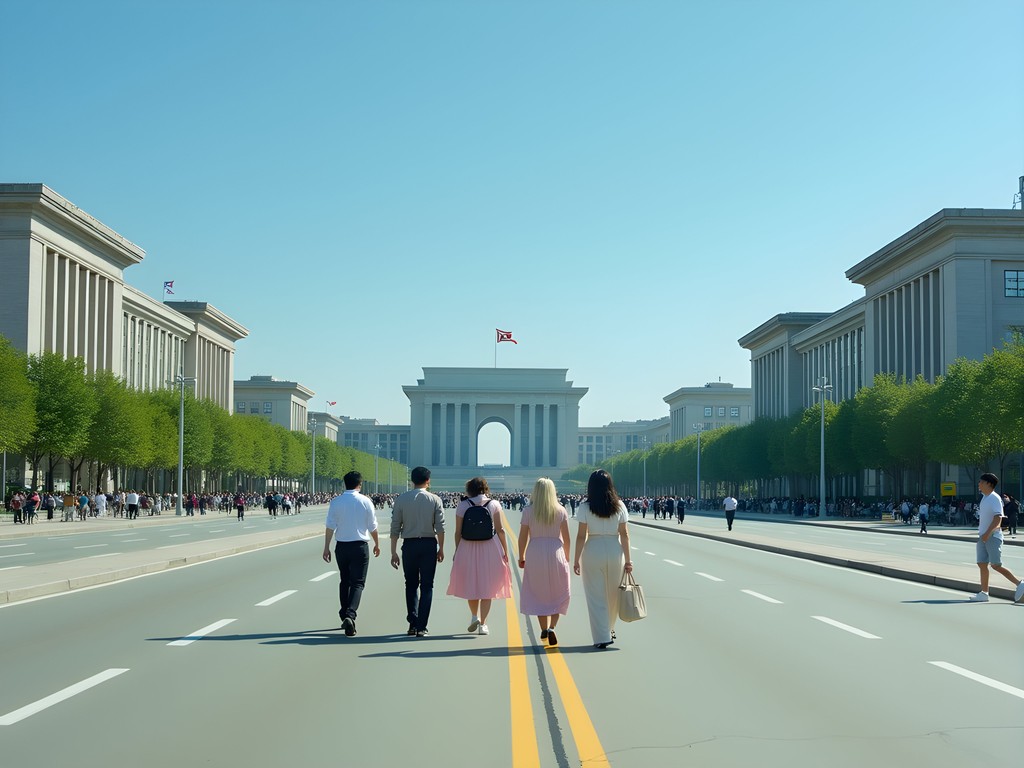
💡 Pro Tips
- Bring a hat and sunscreen – many monument visits involve standing in open plazas with little shade
- Always ask before photographing people or military personnel – your guide will advise what's permitted
- Carry tissues or toilet paper – public restrooms rarely provide these
Emergency Transport and Contingency Planning
Let's talk straight – medical emergencies in North Korea are no joke. The local healthcare system isn't equipped to handle serious conditions, and medical evacuation is complicated by political realities.
Before traveling, comprehensive travel insurance that explicitly covers North Korea is non-negotiable. Many standard policies exclude it, so read the fine print. I use travel insurance which is one of the few that covers this region, though always verify current coverage before purchasing.
In a genuine emergency, your tour company works with your embassy (typically through the Swedish Embassy, which represents many Western nations in Pyongyang) to arrange evacuation – usually to Beijing. This process isn't quick, so bringing a personal medical kit with prescription medications you might need is essential.
Communication during emergencies is limited. There's no international cellular service, and internet access is non-existent for tourists. Your tour company is your lifeline, which is why choosing a reputable operator with experience handling emergencies is crucial. From my trucker days, I learned always having a backup plan – in Pyongyang, that means preventative health measures and choosing your tour company wisely.
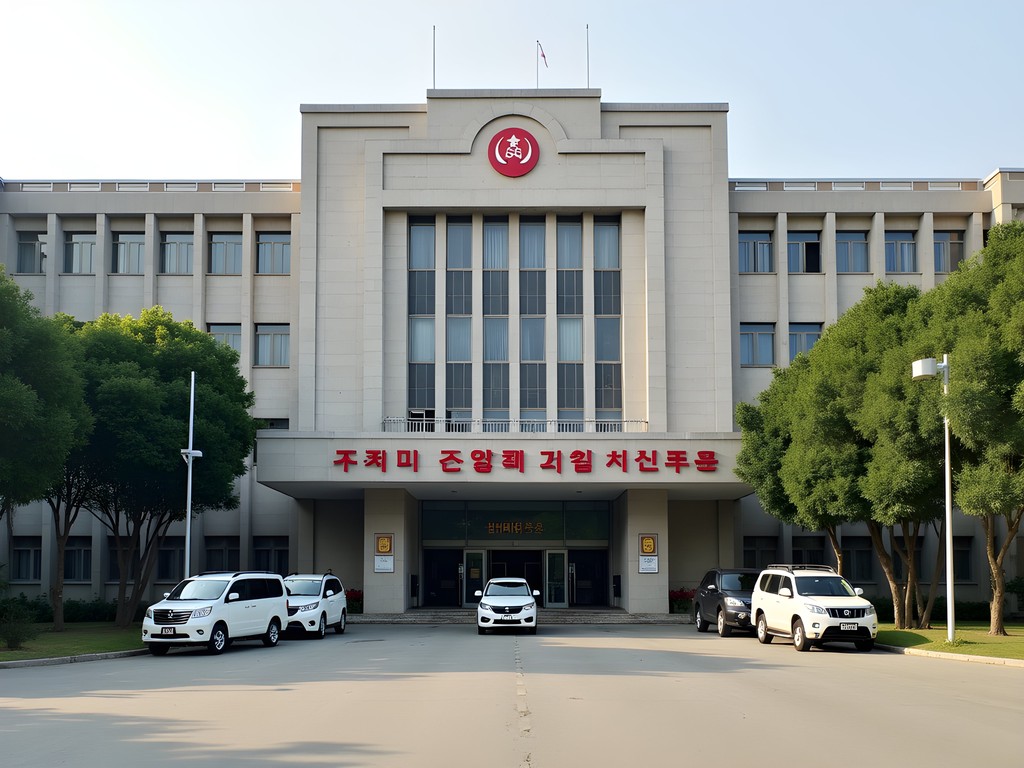
💡 Pro Tips
- Register with your country's embassy before traveling (usually through the embassy in Beijing)
- Bring twice the medication you think you'll need for any chronic conditions
- Memorize blood type, allergies, and any critical medical information – language barriers can complicate emergency care
Final Thoughts
Navigating Pyongyang isn't just about physical movement – it's about understanding the complex dance of permissions, restrictions, and cultural expectations that govern every aspect of travel in North Korea. After three visits spanning nearly a decade, I can tell you the transportation experience has barely changed – still strictly controlled, still fascinating, still unlike anywhere else on earth.
Despite the limitations, there's something profound about experiencing a city where public transport is art, where traffic jams don't exist, and where every journey is a carefully orchestrated glimpse into a society that remains largely hidden from the world. The restrictions become part of the experience itself – a constant reminder of how differently life functions here.
If you decide to make this journey, go with open eyes and managed expectations. You won't have freedom of movement, but you'll witness a transportation system that tells a deeper story about North Korean society than any museum ever could. And isn't that glimpse behind the curtain why we travel to the world's most challenging destinations in the first place?
✨ Key Takeaways
- All visits to Pyongyang require booking through authorized tour companies – independent travel is impossible
- Transportation options are limited to approved tour vehicles and occasional supervised metro rides
- Prepare thoroughly for limited communication and medical infrastructure
- Respect the strict regulations – they're non-negotiable and your guides' jobs depend on your compliance
- Choose larger, established tour operators with proven emergency response capabilities
📋 Practical Information
Best Time to Visit
May-October, with September being ideal for National Day celebrations
Budget Estimate
$1,500-2,500 for a standard 5-day tour (excluding flights to Beijing)
Recommended Duration
5-7 days
Difficulty Level
Challenging

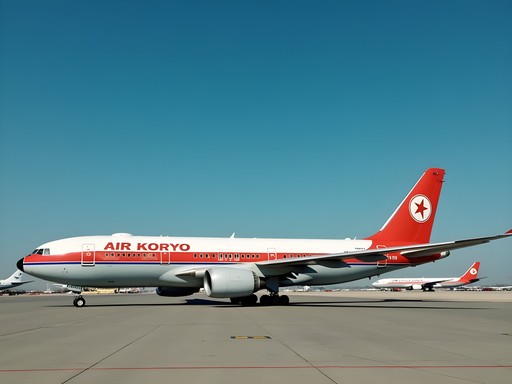
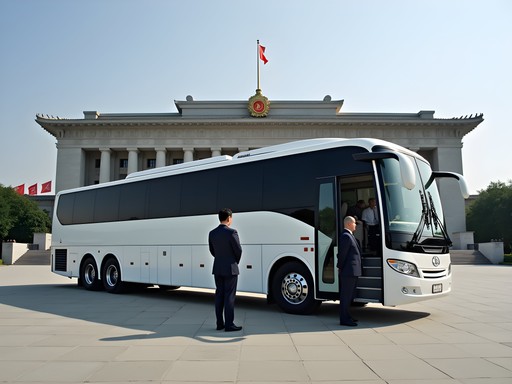
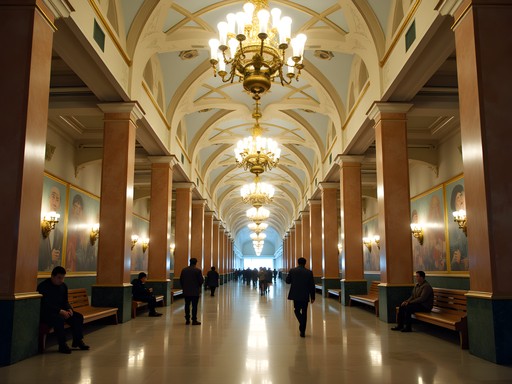
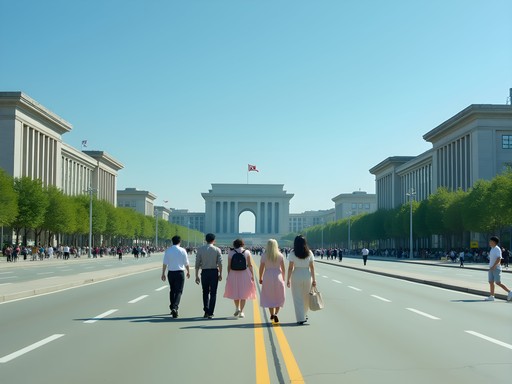
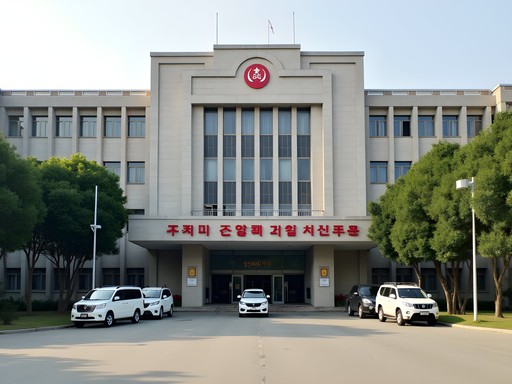


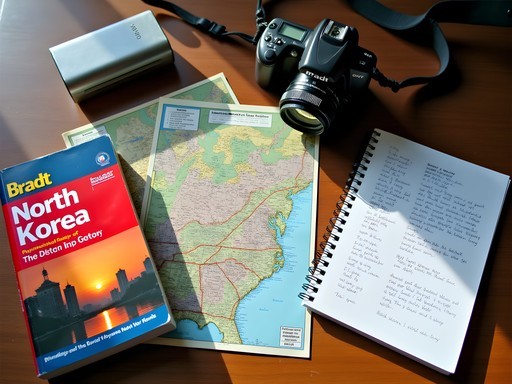
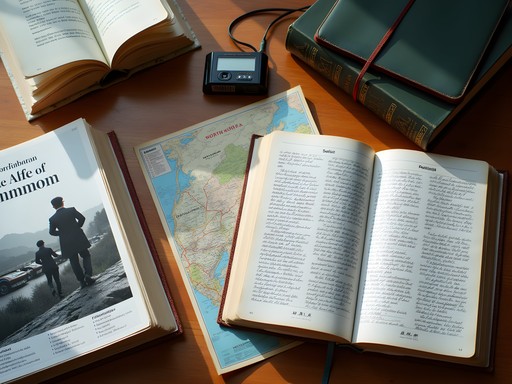






Comments
hikingseeker
Wow, what an eye-opening post! Never realized how complicated it is just to move around Pyongyang.
coffeemood
Is it true they don't let you keep your passport during the trip? That part makes me nervous!
Zoe Dixon
When I went, they collected our passports at the border and returned them when we left. It's standard procedure there, though definitely feels strange! They do give you a receipt, and I never heard of anyone having issues getting their passport back.
coffeemood
Thanks Zoe, that's reassuring to know!
Zoe Dixon
Megan, this brought back such vivid memories of my visit in 2024! The metro ride was definitely a highlight - those chandeliers and socialist realist mosaics were incredible. What struck me most was the contrast between the grand public spaces and the limited mobility we had as visitors. I remember our group wanting to walk just two blocks to see something, and our guides insisted on loading everyone back onto the bus for what would have been a 3-minute stroll. For anyone planning to visit, I found my phrase book incredibly useful for those rare moments of interaction with locals, especially since guides aren't always within earshot. The supervised nature of everything is intense, but there's still something profoundly educational about experiencing such a different system firsthand.
happybackpacker
Which tour company would you recommend for first-timers? Is there a big difference between them?
Megan Gonzalez
There are actually only a handful of companies authorized to operate tours to North Korea. Koryo Tours and Young Pioneer Tours are among the most established. The differences aren't huge since all must work through the state-run KITC, but some offer more specialized itineraries. I'd recommend researching their specific tour options and reading recent reviews before deciding!
bluebuddy
Do they really only show visitors two metro stations? Is it true the rest of the system is off-limits?
Dylan Turner
On standard tours, yes, they typically only showcase Puhung and Yonggwang stations, which are the most elaborate. During my second visit with a specialized tour, we were permitted to see two additional stations, but it required extensive pre-approval. The system definitely operates beyond what tourists see, but access is extremely limited.
Dylan Turner
Excellent breakdown of the transportation realities in Pyongyang, Megan. Having visited twice in the last decade, I can confirm everything you've outlined here. The metro system particularly fascinates me - those ornate stations are essentially museums themselves. One aspect worth emphasizing is the complete lack of spontaneity in movement. Even as someone accustomed to luxury travel with fixers and guides, the level of control in Pyongyang is unprecedented. Your point about the 'complex dance of permissions' is perhaps the most accurate description I've encountered. For anyone considering this journey, preparation and mental flexibility are absolutely essential.
happyphotographer7507
Great article! Did you have any issues taking photos in the metro stations? I've heard they're quite strict about photography there.
Megan Gonzalez
Thanks for asking! Photography is indeed heavily restricted. You can only take photos at designated spots with guide permission. The metro stations are actually one of the few places where photos are sometimes allowed, but always check with your guide first!
happyphotographer7507
That's really helpful to know, thanks Megan!
triplife
Wow, this is such a fascinating read! Never thought I'd be so interested in North Korean public transport!
Ana Robinson
For anyone planning to visit, I found the train from Beijing much more interesting than flying in. You get to see the countryside transition and it's a fascinating journey. Just be prepared for long customs checks at the border!
winterace
Agree about the train! Though those customs checks are no joke - they went through EVERY photo on my camera and checked all my books.
winterace
Did anyone manage to get any unplanned walks in? Our guides were super strict about not wandering even 10 feet away.
springperson
No chance when I went. Always had two guides with us - one in front, one behind.
Venture X
Premium card with 2X miles, $300 travel credit, Priority Pass